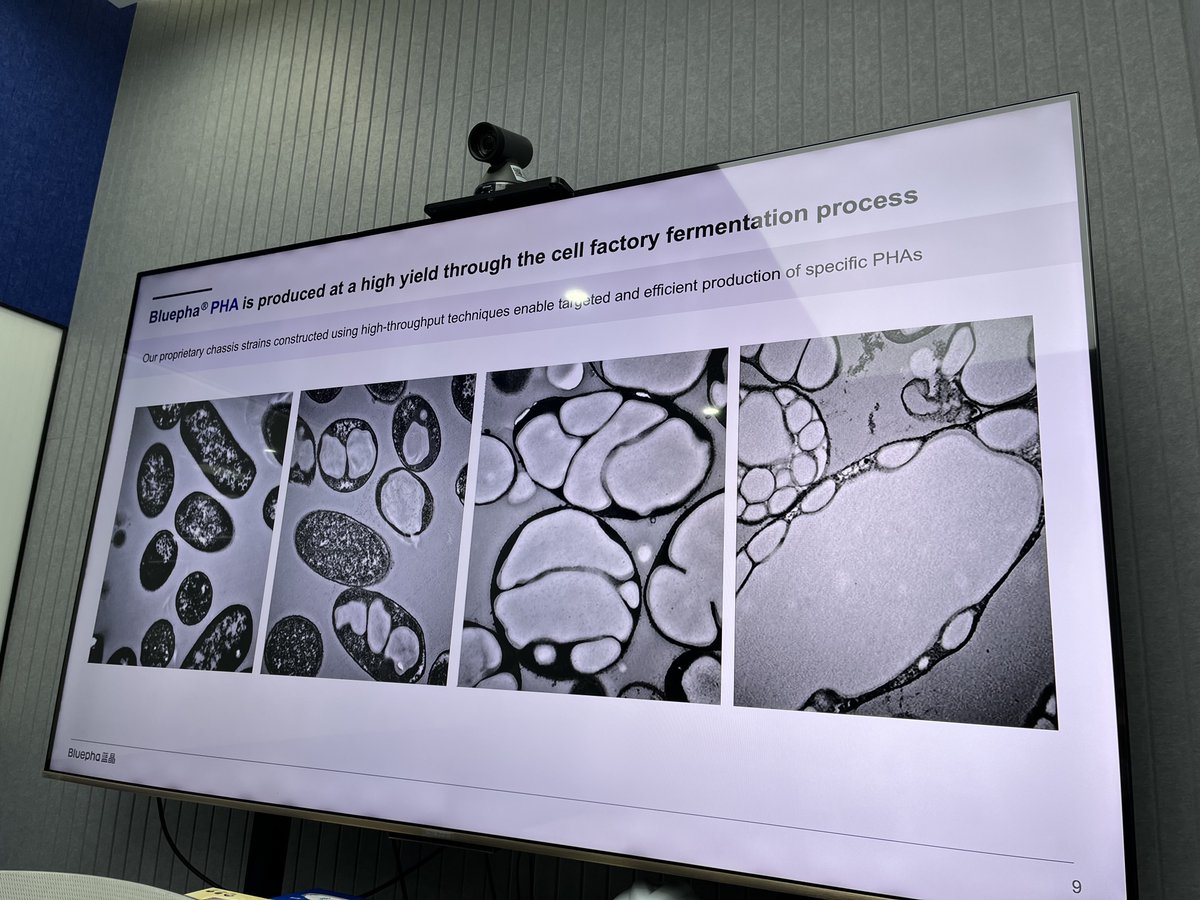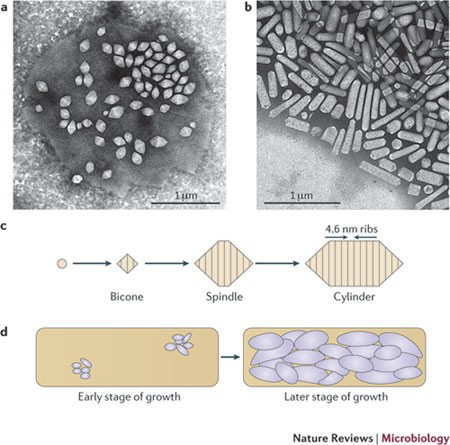🧬📚 10 Books to Learn Synthetic Biology
The field is so broad and moves so fast — DNA synthesis, gene circuits, protein design! — that it can be hard to know where to get started.
Here are the books that I recommend, in order. 🧵 twitter.com/i/web/status/1…
The field is so broad and moves so fast — DNA synthesis, gene circuits, protein design! — that it can be hard to know where to get started.
Here are the books that I recommend, in order. 🧵 twitter.com/i/web/status/1…
1. The Machinery of Life
By David Goodsell
To engineer biology, you first need to understand its basic contours: How DNA, RNA & proteins work together to coordinate the behaviors of a cell.
This book is a gentle, visual introduction.
amazon.com/Machinery-Life…
By David Goodsell
To engineer biology, you first need to understand its basic contours: How DNA, RNA & proteins work together to coordinate the behaviors of a cell.
This book is a gentle, visual introduction.
amazon.com/Machinery-Life…
2. Cell Biology by the Numbers (free)
By Ron Milo & Rob Phillips.
A basic grasp of biophysics will help you build mental models to engineer cells. This book covers the basics: How big is a protein? How fast is transcription? How do cells power it all?
https://t.co/KaiJSFVXgBbook.bionumbers.org

By Ron Milo & Rob Phillips.
A basic grasp of biophysics will help you build mental models to engineer cells. This book covers the basics: How big is a protein? How fast is transcription? How do cells power it all?
https://t.co/KaiJSFVXgBbook.bionumbers.org

3. Molecular Biology of the Cell (you can read old versions online)
By Bruce Alberts et al.
This remains the standard molecular biology textbook. Pay special attention to Chapters 1-7. There is also some text that describes standard methods, like PCR.
https://t.co/ntteJWpnponcbi.nlm.nih.gov/books/NBK21054/

By Bruce Alberts et al.
This remains the standard molecular biology textbook. Pay special attention to Chapters 1-7. There is also some text that describes standard methods, like PCR.
https://t.co/ntteJWpnponcbi.nlm.nih.gov/books/NBK21054/

4. Synthetic Biology - A Primer & BioBuilder
By several authors.
Two books that cover the basics of synthetic biology, from DNA engineering to simple gene circuits.
https://t.co/NedTZLkjDJ https://t.co/5tEh2EODhJamazon.com/Synthetic-Biol…
amazon.com/BioBuilder-Syn…


By several authors.
Two books that cover the basics of synthetic biology, from DNA engineering to simple gene circuits.
https://t.co/NedTZLkjDJ https://t.co/5tEh2EODhJamazon.com/Synthetic-Biol…
amazon.com/BioBuilder-Syn…


5. Underground Garden Club (free)
Not a book, but a great resource for online lectures and in-person events (mostly at Genspace in New York City) to learn bioengineering.
One track is "Microbe-Brewery Crew," where you learn to make chemicals + food.
https://t.co/ZWD28In0clundergroundgarden.club

Not a book, but a great resource for online lectures and in-person events (mostly at Genspace in New York City) to learn bioengineering.
One track is "Microbe-Brewery Crew," where you learn to make chemicals + food.
https://t.co/ZWD28In0clundergroundgarden.club

6. CRISPRpedia (free)
CRISPR gene-editing is becoming an invaluable tool for synthetic biologists. It's used to delete, add, or modify DNA and RNA in living cells.
This free, online book from UC Berkeley covers the basics.
innovativegenomics.org/crisprpedia/
CRISPR gene-editing is becoming an invaluable tool for synthetic biologists. It's used to delete, add, or modify DNA and RNA in living cells.
This free, online book from UC Berkeley covers the basics.
innovativegenomics.org/crisprpedia/
7. A Computer Scientist's Guide to Cell Biology (optional)
Software engineers often email me to ask how they can get started in synthetic biology. The switch is not gentle, but this book incorporates useful mental models to help you make the transition.
https://t.co/VAQNHXl6oIamazon.com/Computer-Scien…

Software engineers often email me to ask how they can get started in synthetic biology. The switch is not gentle, but this book incorporates useful mental models to help you make the transition.
https://t.co/VAQNHXl6oIamazon.com/Computer-Scien…

8. An Introduction to Systems Biology
By Uri Alon
An outstanding introduction to biological circuits, and how to build them, from one of the field's foremost practitioners.
Some of the math gets a bit intense, so you should learn some calculus first.
https://t.co/g04DaVEst6amazon.com/Introduction-S…

By Uri Alon
An outstanding introduction to biological circuits, and how to build them, from one of the field's foremost practitioners.
Some of the math gets a bit intense, so you should learn some calculus first.
https://t.co/g04DaVEst6amazon.com/Introduction-S…

9. Physical Biology of the Cell
By Rob Phillips
An incredibly deep dive into biophysics. Mastering this book will make you a more quantitative and thoughtful genetic designer.
Accompanying course:
https://t.co/39hzMAtagZrpgroup.caltech.edu/aph161/index.h…
amazon.com/Physical-Biolo…
By Rob Phillips
An incredibly deep dive into biophysics. Mastering this book will make you a more quantitative and thoughtful genetic designer.
Accompanying course:
https://t.co/39hzMAtagZrpgroup.caltech.edu/aph161/index.h…
amazon.com/Physical-Biolo…
10. Deep Learning
By Goodfellow, Bengio & Courville
Machine learning will play an increasingly important role in engineered biology. This free book teaches the basics.
Accompanying MIT course (with biology focus!):
https://t.co/XEzKQmsY4l https://t.co/I7HNrBOQeDmit6874.github.io
deeplearningbook.org

By Goodfellow, Bengio & Courville
Machine learning will play an increasingly important role in engineered biology. This free book teaches the basics.
Accompanying MIT course (with biology focus!):
https://t.co/XEzKQmsY4l https://t.co/I7HNrBOQeDmit6874.github.io
deeplearningbook.org

Thanks for reading.
There is a need for deeper, more comprehensive books on synthetic biology. And I think we won't have to wait too long for that. 👀
Subscribe to my newsletter to learn more: readcodon.com
There is a need for deeper, more comprehensive books on synthetic biology. And I think we won't have to wait too long for that. 👀
Subscribe to my newsletter to learn more: readcodon.com
• • •
Missing some Tweet in this thread? You can try to
force a refresh

















